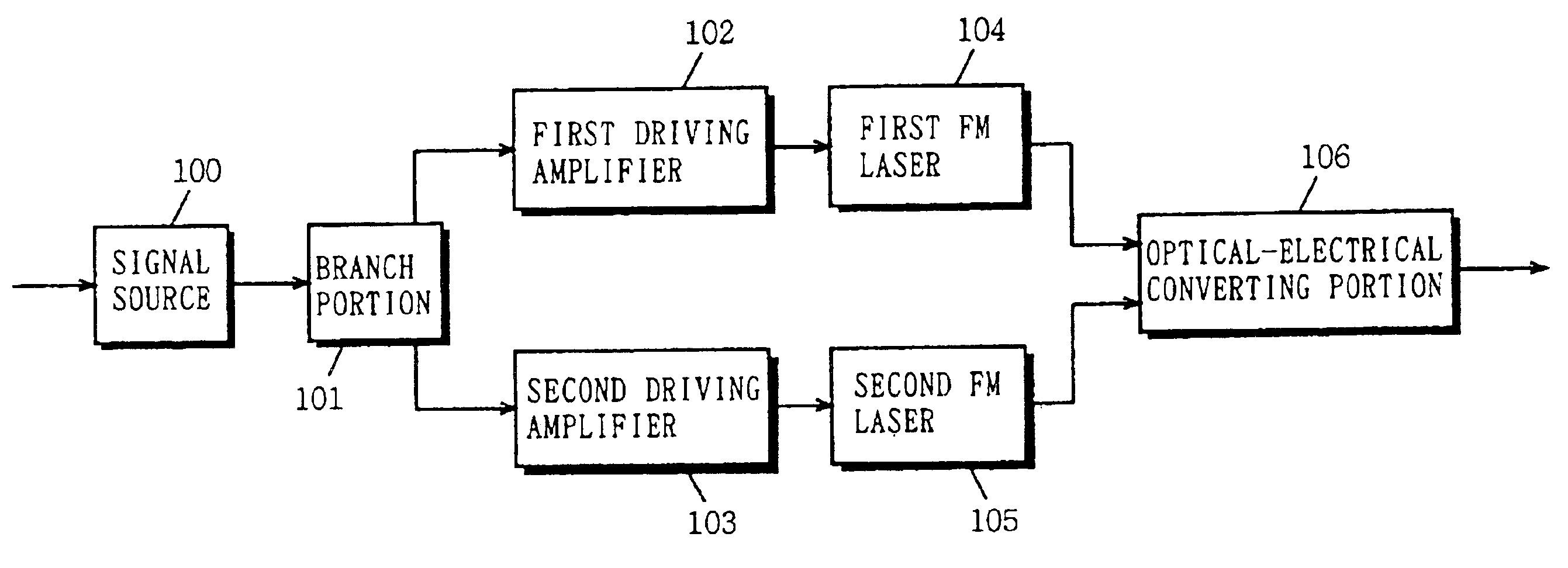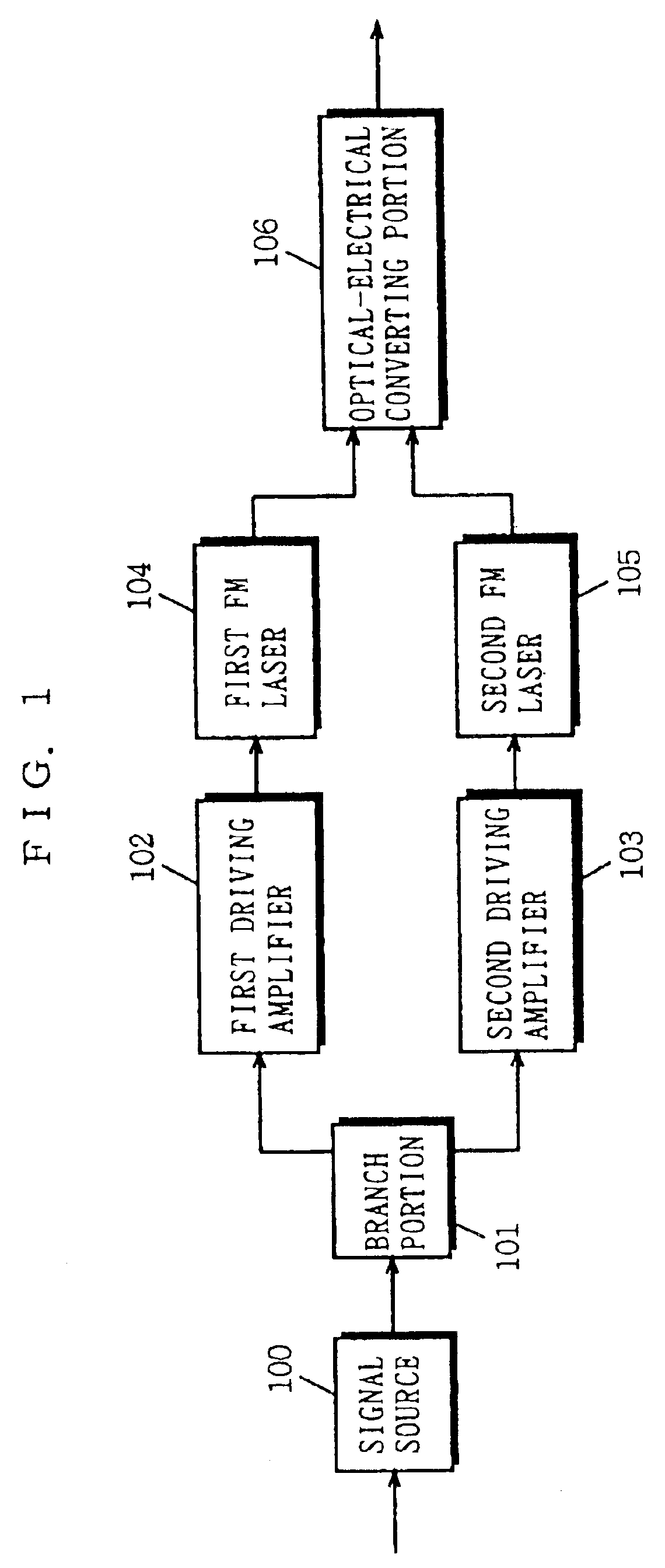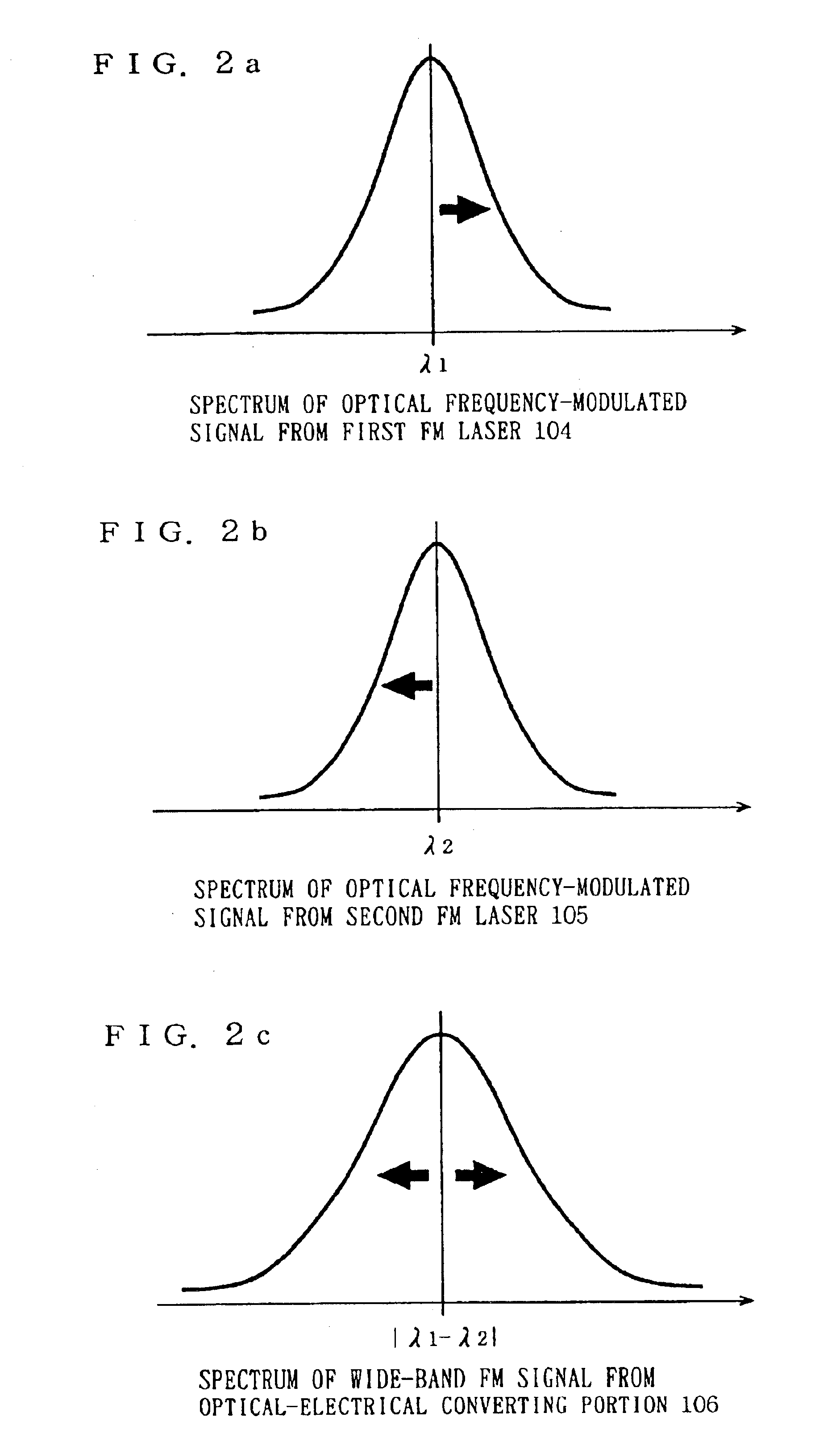FM modulator
a modulator and fm technology, applied in the field of fm modulators, can solve the problems of amplitude increase of inputted signals to the fm, sharp extreme deterioration of distortion characteristics, etc., and achieve the effect of reducing the quality of fm demodulation signals, facilitating the generation of optical frequency-modulated signals, and high quality
- Summary
- Abstract
- Description
- Claims
- Application Information
AI Technical Summary
Benefits of technology
Problems solved by technology
Method used
Image
Examples
first embodiment
[0045](First Embodiment)
[0046]FIG. 1 is a block diagram showing the structure of an FM modulator according to a first embodiment of the present invention. In FIG. 1, the FM modulator of the present embodiment includes a signal source 100, a branch portion 101, a first frequency modulation laser (hereinafter referred to as a first FM laser) 104, a second frequency modulation laser (hereinafter referred to as a second FM laser) 105, and an optical-electrical converting portion 106. Further, as required, the FM modulator includes first and second driving amplifiers 102 and 103.
[0047]Described next is operation of the embodiment shown in FIG. 1. The signal source 100 outputs an electrical signal which is an original signal for FM modulation. The branch portion 101 branches the electrical signal outputted from the signal source 100 into a phase-uninverted signal (in-phase signal) and a phase-inverted signal (opposite phase signal) and outputs each of these signals. The first and second d...
second embodiment
[0050](Second Embodiment)
[0051]FIG. 3 is a block diagram showing the structure of an FM modulator according to the second embodiment of the present invention. In FIG. 3, the FM modulator of the present embodiment includes, in addition to the structure in FIG. 1, an amplitude adjusting portion 207.
[0052]Described next is operation of the embodiment shown in FIG. 3. Since most part of the structure in the present embodiment is the same as that of the above described first embodiment, only different operation is described below. The amplitude adjusting portion 207 adjusts a signal amplitude level of the in-phase signal outputted from the branch portion 101 to equate frequency deviation of the first and second optical signals. The same effect can be obtained when the amplitude adjusting portion 207 is inserted between the first driving amplifier 102 and the first FM laser 104. Further, according to the characteristic of the semiconductor laser used as the first and second FM lasers 104 ...
third embodiment
[0053](Third Embodiment)
[0054]FIG. 4 is a block diagram showing the structure of an FM modulator according to the third embodiment of the present invention. In FIG. 4, the FM modulator of the present embodiment includes, in addition to the structure in FIG. 1, a delay adjusting portion 308.
[0055]Described next is operation of the embodiment shown in FIG. 4. Since most part of the structure of the present embodiment is the same as that of the above described first embodiment, only different operation is described below. The delay adjusting portion 308 adds appropriate propagation delay to the in-phase signal outputted from the branch portion 101 to equate propagation delay with which the in-phase signal outputted from the branch portion 101 reaches through the first FM laser 104 the optical-electrical converting portion 106 and propagation delay with which the opposite phase signal outputted from the branch portion 101 reaches through the second FM laser 105 the optical-electrical co...
PUM
 Login to View More
Login to View More Abstract
Description
Claims
Application Information
 Login to View More
Login to View More - R&D
- Intellectual Property
- Life Sciences
- Materials
- Tech Scout
- Unparalleled Data Quality
- Higher Quality Content
- 60% Fewer Hallucinations
Browse by: Latest US Patents, China's latest patents, Technical Efficacy Thesaurus, Application Domain, Technology Topic, Popular Technical Reports.
© 2025 PatSnap. All rights reserved.Legal|Privacy policy|Modern Slavery Act Transparency Statement|Sitemap|About US| Contact US: help@patsnap.com



